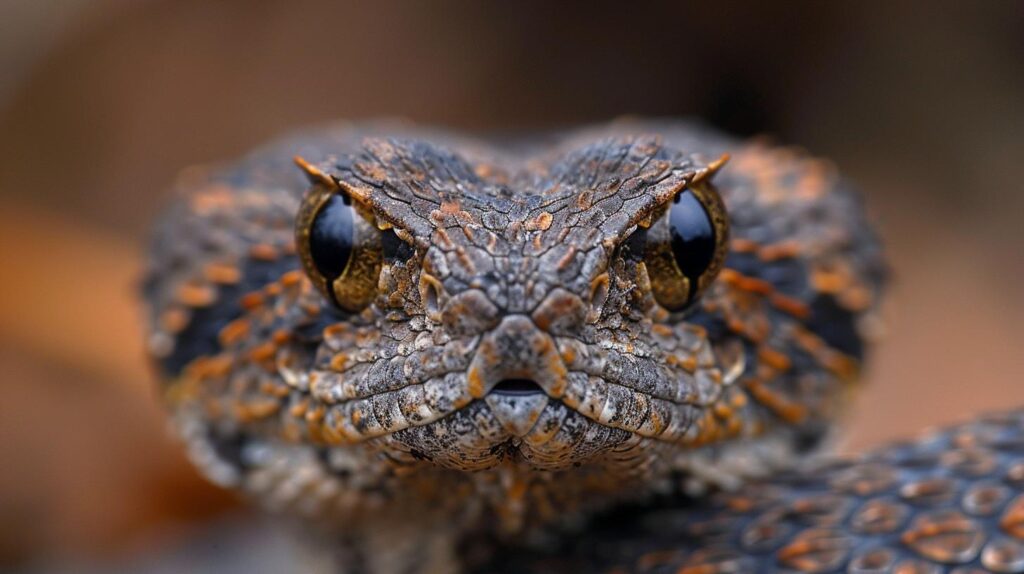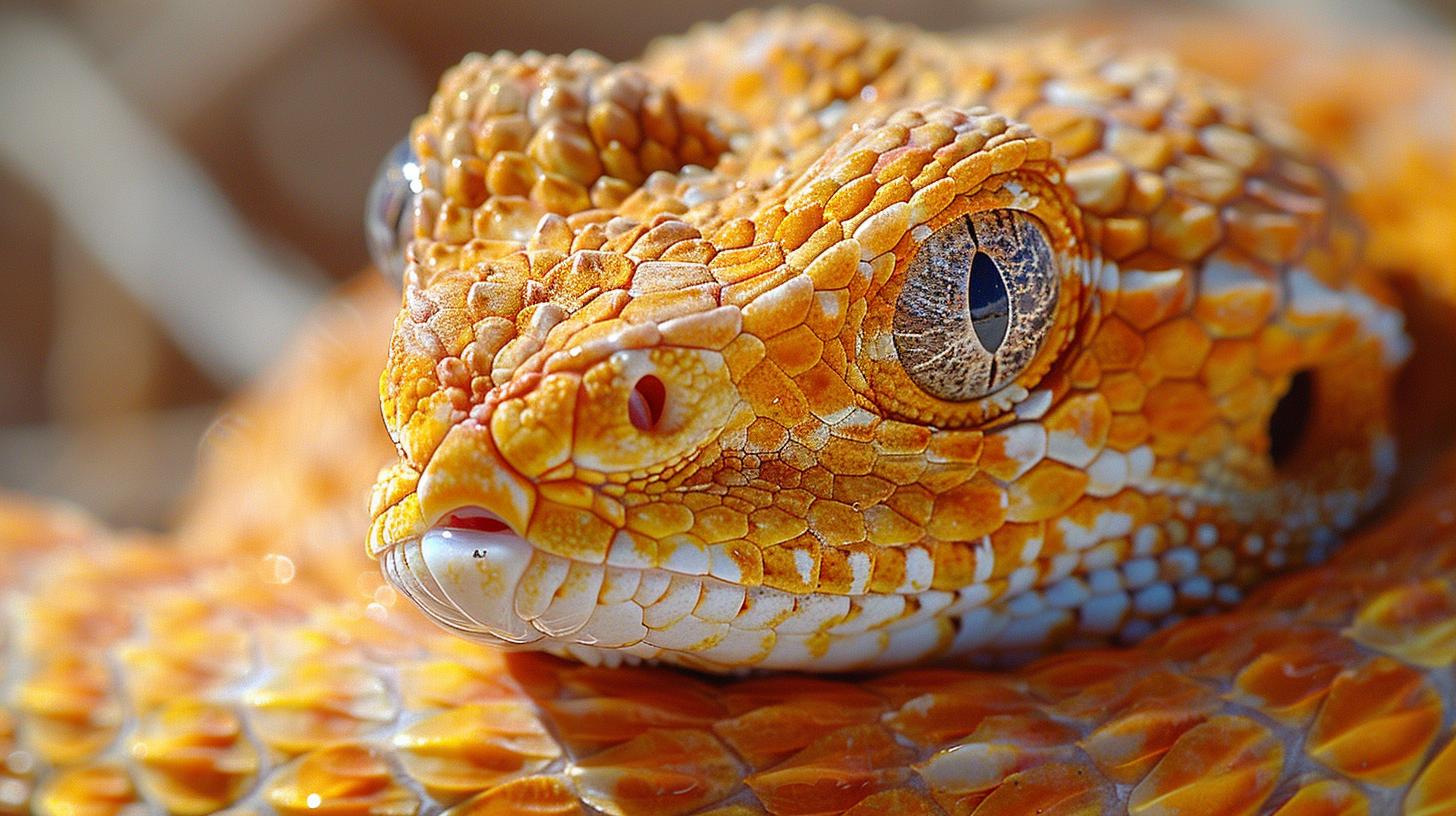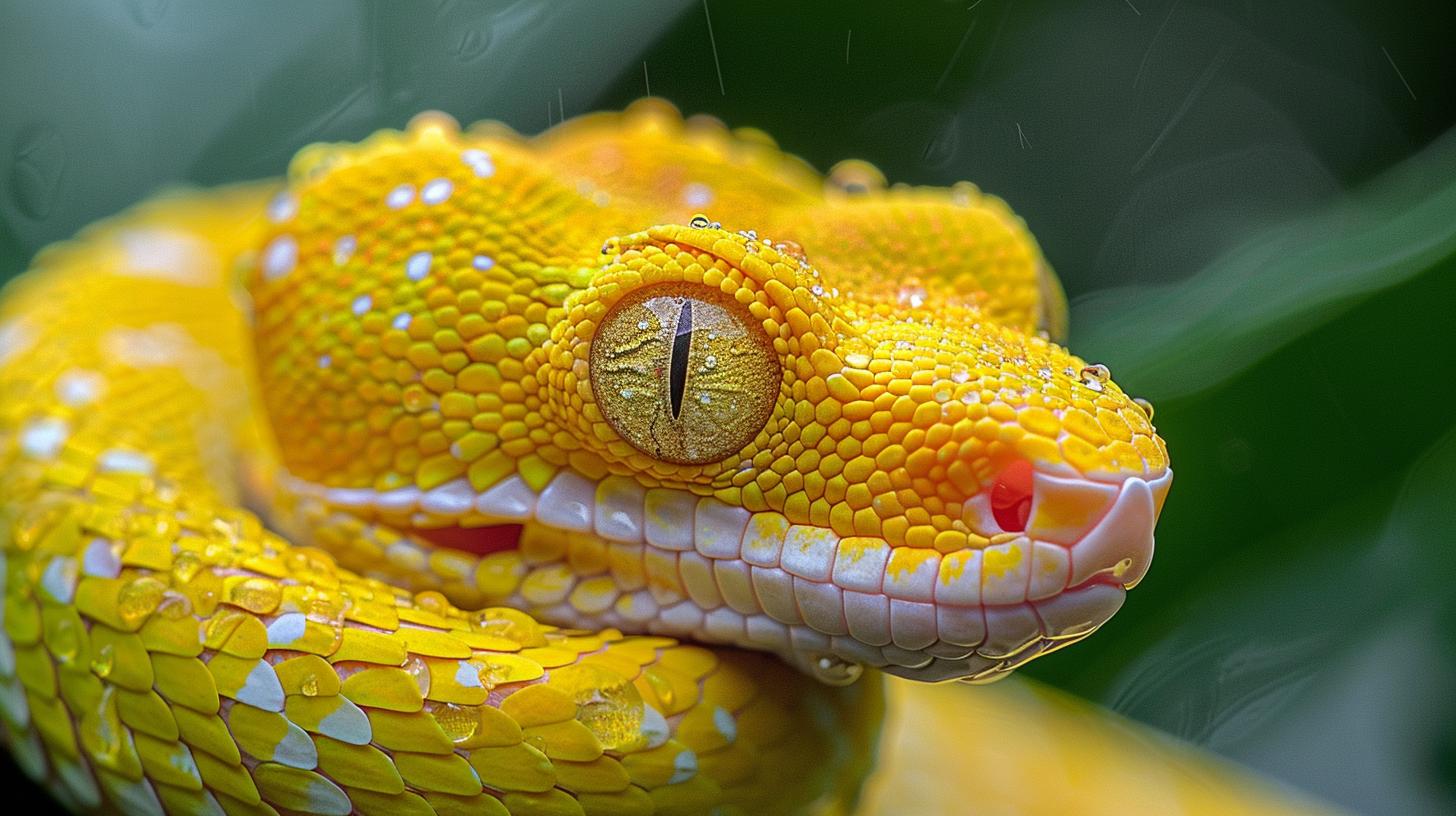What Signals Illness in Your Reptile?

Understanding Your Reptile's Health
When it comes to identifying reptile illness signals, understanding your scaly companion's health can be akin to learning a new language. Reptiles, with their diverse species, each present unique signs that are vital cues for owners to detect early. This initial exploration into the faculties of reptilian well-being lays the groundwork for pet parents to differentiate between ordinary quirks and potential distress signals.
Establishing a baseline of what's considered 'normal' for your reptile is pivotal. Each species has its own set of typical behaviors, eating habits, and physical characteristics. For instance, it's essential to note how often your iguana basks under the UV light or the average amount your snake consumes during feeding times.
These details might seem mundane at first glance but understanding these norms forms the cornerstone of effective monitoring. When deviations from these patterns occur, they serve as critical indicators that something might be amiss with your pet's health.
Addressing common reptile illness signals requires an attentive eye. Changes such as a sudden decline in activity levels, refusal of food, weight loss, apparent injuries, or abnormal feces make up a crucial part of this detective work.
Similarly significant are behavioral changes-shifts in temperament like increased aggression or unusual hiding could point towards underlying issues. Additionally, physical symptoms like skin discoloration, problems with shedding, swollen extremities, or respiratory difficulties should never be overlooked; these may hint at serious conditions needing immediate intervention.
The steps towards ensuring your reptile's health extend beyond simple observation; they include creating an environment that encourages natural behaviors and consulting with professionals when anomalies persist. By fostering an informed approach toward recognizing and responding to signs of illness promptly, owners can significantly impact their reptilian pets' quality of life and longevity.
The Baseline
Having a keen understanding of what represents normal behavior and physical condition for your reptile is instrumental in early detection of potential health issues. This knowledge acts as a benchmark against which any deviation, no matter how slight, can be measured.
Establishing this baseline involves observing several aspects of your reptile's daily life, including its appetite, activity levels, skin condition, and waste production. It's not merely about spotting overt reptile illness signals, but also about recognizing when your pet is not its usual self.
For instance, a normally voracious eater turning down meals could signal an underlying issue. Similarly, a lively reptile becoming increasingly lethargic should raise concerns.
Regular observation will also familiarize you with the normal appearance of your pet's feces and shed skin - significant deviations from these norms can be telltale signs of health problems. In essence, the goal is to achieve such a thorough understanding of your reptile's standard behavior and physical state that even minor changes trigger your attention.
| Date | Appetite (Y/N) | Activity Level (High/Medium/Low) | Skin Condition | Fecal Appearance |
|---|---|---|---|---|
| April 1 | Y | High | Normal | Normal |
| April 8 | N | Low | Dry patches | Unusual color/texture |
By doing this consistently, any anomalies become immediately apparent, allowing for prompt intervention either through adjustments in care or seeking veterinary guidance if necessary. Understanding your reptile's baseline normalcy enables you to act with informed urgency when *reptile illness signals* present themselves. Coupled with professional veterinary advice when needed, this proactive approach minimizes risks and supports the long-term health and well-being of your reptile pets.
Common Reptile Illness Signals
When it comes to caring for reptiles, understanding the signs that may indicate a health issue is pivotal. Reptile illness signals can range from subtle to overt, and catching these early can make a significant difference in the treatment outcome. Many reptile owners may not realize that seemingly minor changes in behavior or appearance could signal a potential health problem needing attention.
One of the most straightforward indicators that something might be amiss is a change in eating habits. A lack of appetite or refusal to eat can be one of the first tell-tale signs of illness. However, it's important to differentiate between normal fasting periods, which some reptiles undergo, and a sudden unexplained loss of appetite.
Weight loss or noticeable decrease in body condition without changes in diet is another critical signal not to overlook. Unusual feces, whether due to consistency, color, or frequency, also warrant closer examination as they might indicate digestive issues or infections.
- Behavioral Changes: Keep an eye out for any sudden shifts in activity levels; increased lethargy or conversely, restlessness can both be indicators of distress.
- Physical Appearance: Visible injuries are obvious concerns but look also for subtler signs like skin discoloration, irregular shedding patterns, swollen limbs which could suggest infection or metabolic issues.
- Respiratory Symptoms: Difficulty breathing or uncharacteristic sounds while breathing could point towards respiratory infections; especially common in conditions with improper humidity.
Recognizing these signals early on plays a crucial part in ensuring your reptile's health and wellbeing. Each species has its unique baseline behaviors and physical characteristics making it imperative for owners to familiarize themselves with what is normal for their pet specifically. While some symptoms might seem benign at first glance, when observed in conjunction with changes in behavior or appearance they may highlight an underlying issue that requires professional veterinary attention.
Transitioning into more detailed observations involves monitoring your reptile for any deviations from its typical behavior patterns such as increased aggression towards handlers or unusual hiding habits which could further indicate stress-related illnesses. Taking note of these behaviors provides valuable insights into their general health and opens avenues for timely intervention before more serious symptoms develop.

To encompass all necessary steps towards effectively monitoring and responding to these signs will involve integrating knowledge about your specific reptile's needs with attentiveness towards any deviations from its established norms. As our discussion progresses beyond recognizing illness signals, we'll delve into the importance of direct action-how and when to seek professional veterinary guidance-ensuring your reptile's health remains optimum through proactive care rather than reactive measures.
Behavioral Changes as Red Flags
In the realm of reptile care, incorporating a meticulous observation of behavioral patterns is fundamental. This task is pivotal in identifying early signals of potential health issues within these fascinating creatures. Behavioral changes, while sometimes subtle, often serve as the initial alert system indicating something may be amiss in your reptile's wellbeing. Recognizing such reptile illness signals requires a keen eye and an understanding that deviations from normal behavior should not be overlooked.
One primary behavioral indicator pet owners should monitor is a significant shift in activity levels. For instance, a reptile that usually explores its enclosure actively but suddenly becomes lethargic or vice versa might be experiencing health problems. Uncharacteristic hiding behavior also falls under this category; if your typically sociable reptile starts spending excessive time out of sight, this could signal stress or illness. Listed below are critical behavioral shifts to watch for, which include:
- Sudden lethargy or decreased movement
- Unusual aggression or irritability
- Changes in eating habits-either loss of appetite or unusual hunger
- Excessive hiding or avoidance of interaction
Additionally, alterations in sleeping patterns can be indicative of health issues. Reptiles have specific sleep cycles that may vary by species but recognizably follow consistent patterns when healthy. Disruptions to these patterns-sleeping too much during their active hours or displaying insomnia-like symptoms-can be distressing signs pointing towards health concerns.
It's also paramount to observe and understand changes in social behavior among reptiles who cohabit. While some species are solitary by nature, others exhibit social hierarchies and interactions within their groups. A sudden change in how your reptile interacts with its enclosure mates, such as unprovoked aggression or complete withdrawal, can signify stress, discomfort, or illness affecting its usual demeanor.
These behavioral red flags serve as preliminary alerts that should never be ignored by conscientious pet owners. They underscore the importance of maintaining a vigilant eye on your pet's daily routines and interactions-not just for reptile illness signals but as part of holistic care practice aiming at preserving their optimal health and happiness.
As we continue delving into vital aspects of reptile care, it becomes clear that integrating knowledge on physical symptoms with behavioral observations creates a comprehensive monitoring approach indispensable for every reptile owner.
Physical Symptoms Not to Ignore
In the realm of reptile care, recognizing physical signs that may indicate a looming health issue is paramount. As resilient as these creatures appear, their well-being can be significantly compromised by various factors including disease, inappropriate habitat conditions, or nutritional deficiencies. The challenge often lies in identifying the subtle changes in a reptile's physical state that signal distress or illness.
This section aims to shed light on some critical physical symptoms that should never be overlooked by reptile owners. Awareness and timely action can make a considerable difference in the outcome for a sick reptile.
Unusual Skin Conditions
One of the first areas where signs of illness may manifest is the skin. Reptiles are known for their unique skin textures and shedding cycles, making it essential for owners to observe any deviations from normal patterns. Discoloration, persistent raw spots post-shedding, wounds that seem not to heal, or an irregular shedding cycle may signify underlying health issues.
These conditions could stem from infections, parasitic infestations, or even environmental stressors affecting the reptile's immune response. It is crucial for owners to monitor these reptile illness signals closely and consider consulting with a specialist if such symptoms persist.
Swelling or Inflammation
Another telltale sign of discomfort or disease in reptiles can be swelling or inflammation in any part of the body. Swollen limbs might indicate an injury possibly overlooked or could suggest more serious conditions like gout, arthritis, or edema resulting from poor circulation or heart problems.
Similarly, inflammation around the eyes or mouth must not be ignored as these could be early indicators of respiratory infections or metabolic bone disease respectively-common ailments among captive reptiles lacking proper dietary balance or UVB exposure.
Respiratory Distress
Difficulty breathing in reptiles is often less obvious than in mammals but observing certain behaviors can help identify this life-threatening condition. Indications like wheezing sounds while breathing, prolonged mouth gaping (outside thermoregulating behavior), excessive mucus production around nostrils and mouth, and an unusual posture aiming to facilitate easier breathing are critical symptoms not to miss. These can allude to respiratory infections - predominantly caused by inadequate humidity levels or temperatures within their enclosures.
Each of these symptoms speaks volumes about potential health issues lurking beneath what might seem like minor changes at first glance. By adhering closely to these pointers on physical symptoms not to ignore, reptile enthusiasts can better safeguard their pets against worsening health conditions and ensure prompt medical attention when necessary.
The Right Time to Consult a Veterinarian
Identifying the Need for Professional Intervention
When caring for a reptile, understanding when to escalate your concerns to a veterinary professional is as crucial as recognizing symptoms of illness. This vigilance ensures that your beloved pet receives the appropriate care without delay, potentially saving its life. Not all signs of discomfort or ailment in reptiles demand an emergency vet visit; however, distinguishing between situations that require immediate attention and those that can be monitored closely at home is vital.

Reptile owners must stay informed about the specific health demands and challenges of their pets, including familiarizing themselves with common reptile illness signals Doing so prepares them to act swiftly and judiciously when faced with potential health issues.
Warning Signs Prompting Veterinary Care
A primary concern that should prompt an immediate consultation includes any stark or rapid change in usual behaviour; this might signify severe distress or underlying health conditions needing professional diagnosis. For instance, persistent refusal to eat despite offering favorite foods or acute lethargy could indicate internal problems such as infections, parasitic invasions, or other critical illnesses.
Physical symptoms like difficulty breathing, swollen limbs, skin discoloration, and irregular shedding patterns are unmistakable red flags that necessitate expert evaluation. These signs suggest complications that could escalate if not addressed promptly by a qualified veterinarian who specializes in reptilian medicine.
Making the Decision to Seek Veterinary Assistance
The decision to consult a veterinarian should also consider the duration and intensity of symptoms observed. While some conditions might improve with adjustments to habitat, diet, or daily care routines-monitoring these changes closely is essential for determining their effectiveness. Should symptoms persist beyond a reasonable period or worsen over time, it underscores the urgency for veterinary intervention.
Chronic conditions, particularly those failing to resolve through preliminary home care efforts, often require specialized treatment plans formulated by professionals experienced in handling exotic animals such as reptiles. By maintaining a keen awareness of your reptile's normal behaviour and physical state, coupled with an understanding of key illness indicators, pet owners can make informed decisions on when expert care is critically needed.
Ensuring Long-Term Reptile Health
In wrapping up our discussion on the signals of illness in reptiles, it's clear that vigilance and knowledge are pet owners' best tools. Recognizing the early signs of distress or disease in your reptile companion can mean the difference between a minor issue and a major health crisis.
Focusing on understanding your reptile's normal behavior patterns, physical condition, and appetite sets a solid foundation for identifying when things aren't quite right. Whether it's a sudden lack of activity, refusal to eat, or more subtle behavioral changes, being attuned to these reptile illness signals is pivotal for every responsible reptile owner.
Proactive care plays an indispensable role in preventing many common health issues from taking root. By ensuring their habitat mimics their natural environment as closely as possible, providing a balanced diet suited to their species, and keeping a regular check-up schedule with a veterinarian who's experienced in treating reptiles, owners can greatly enhance the quality of life of their scaly friends.
It's about creating an optimal environment where your reptile not only survives but thrives-shielding them from potential health woes before they even begin.
We hope this guide equips you with the insight needed to maintain your pet's well-being effectively. Remember, spotting those critical warning signs early could save your reptile from unnecessary suffering and ensure many happy years together. For more valuable insights into pet care and wellness strategies across all types of animals, we encourage you to continue browsing through our wealth of articles.
Your next step? Dive into our content library for more enriching reads that empower you to become the most knowledgeable and caring pet owner you can be.
Frequently Asked Questions
What Are Four Signs of Illness or Disease in a Reptile?
Four signs of illness or disease in a reptile include a noticeable decrease in appetite or refusal to eat, unusual fecal matter (such as changes in color, consistency, or frequency), lethargy and an overall decrease in activity level, and physical abnormalities like swelling, wounds, or discolorations on the skin.
Observing any of these symptoms warrants immediate consultation with a vet specializing in reptiles.
Why Do Many Reptiles Not Show Any Signs of Illness When They Are Sick?
Many reptiles do not show signs of illness when they are sick because they are inherently adept at hiding weaknesses. This behavior is instinctual, stemming from their need to not appear vulnerable to predators in the wild. Consequently, once symptoms become visible, the disease may have already advanced, emphasizing the importance of regular health checks for these pets.
What Disease Is Common in Reptiles?
Respiratory infections are quite common among reptiles and can manifest through symptoms like wheezing, nasal discharge, difficulty breathing, and mouth breathing. These infections often stem from inadequate environmental conditions such as improper humidity levels or temperatures within their habitat, highlighting the importance of maintaining optimal living conditions for your reptilian pets.
What Are the Abnormal Behaviors of Reptiles?
Abnormal behaviors in reptiles that may indicate illness include significant changes in their daily routine; for example, increased aggression or complete withdrawal can be observed. Constant hiding when they usually enjoy basking could indicate discomfort or stress caused by underlying health issues.
What Are 5 Symptoms of the Disease?
Five symptoms indicative of disease in reptiles include persistent lack of eating despite offering favorite foods; repetitive regurgitation; visible skin conditions such as rashes, blisters, or shedding problems; irregular breathing patterns including gasping for air; and mobility issues like dragging limbs while moving.
What Are the Symptoms of Herpesvirus in Reptiles?
The symptoms of herpesvirus in reptiles can be severe and include swollen eyes that might be accompanied by discharge; sores around the mouth and on other parts of the body; respiratory distress exhibited by open-mouthed breathing; neurological signs such as tremors or paralysis; and often a sudden decline in general health condition leading to anorexia or lethargy.
Given its serious nature and potential for rapid deterioration of health, immediate veterinary care is crucial upon noticing these symptoms.
Leave a Reply
You must be logged in to post a comment.